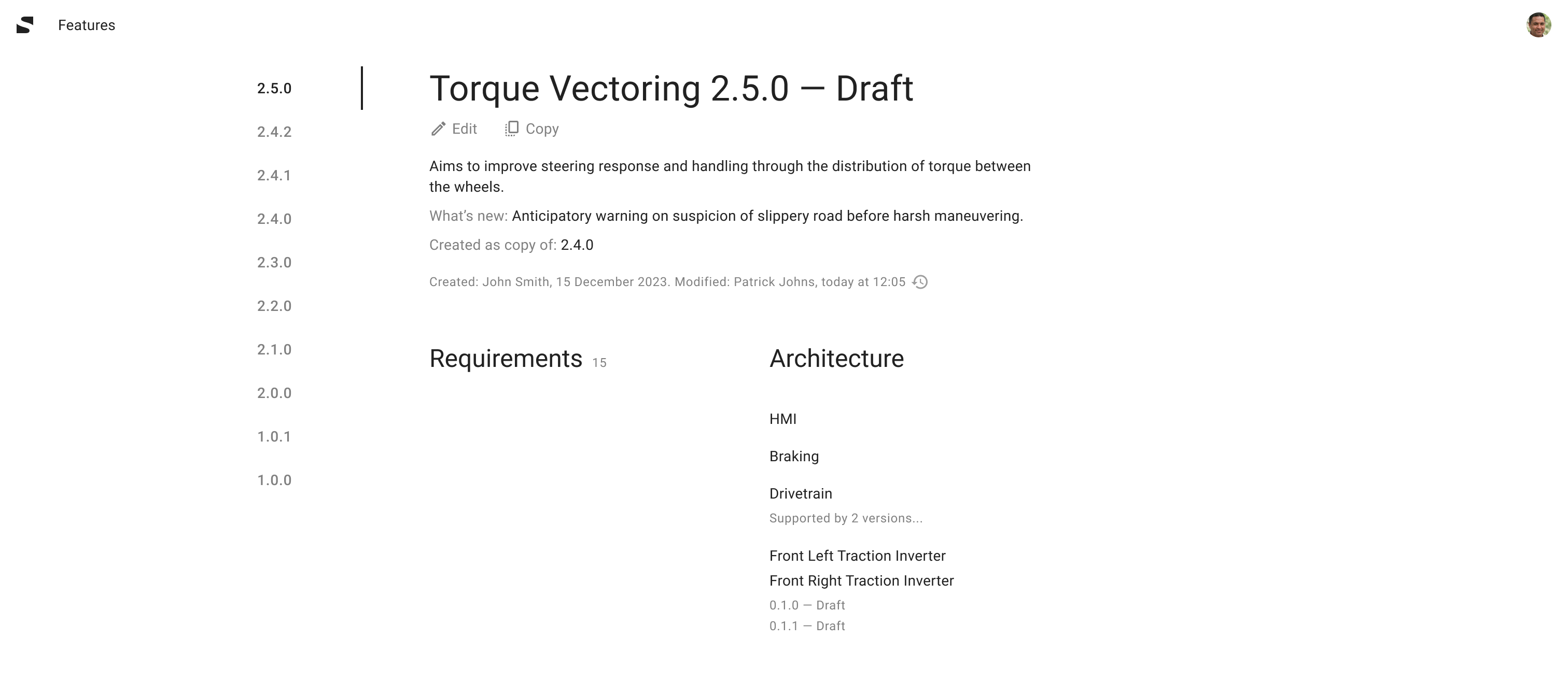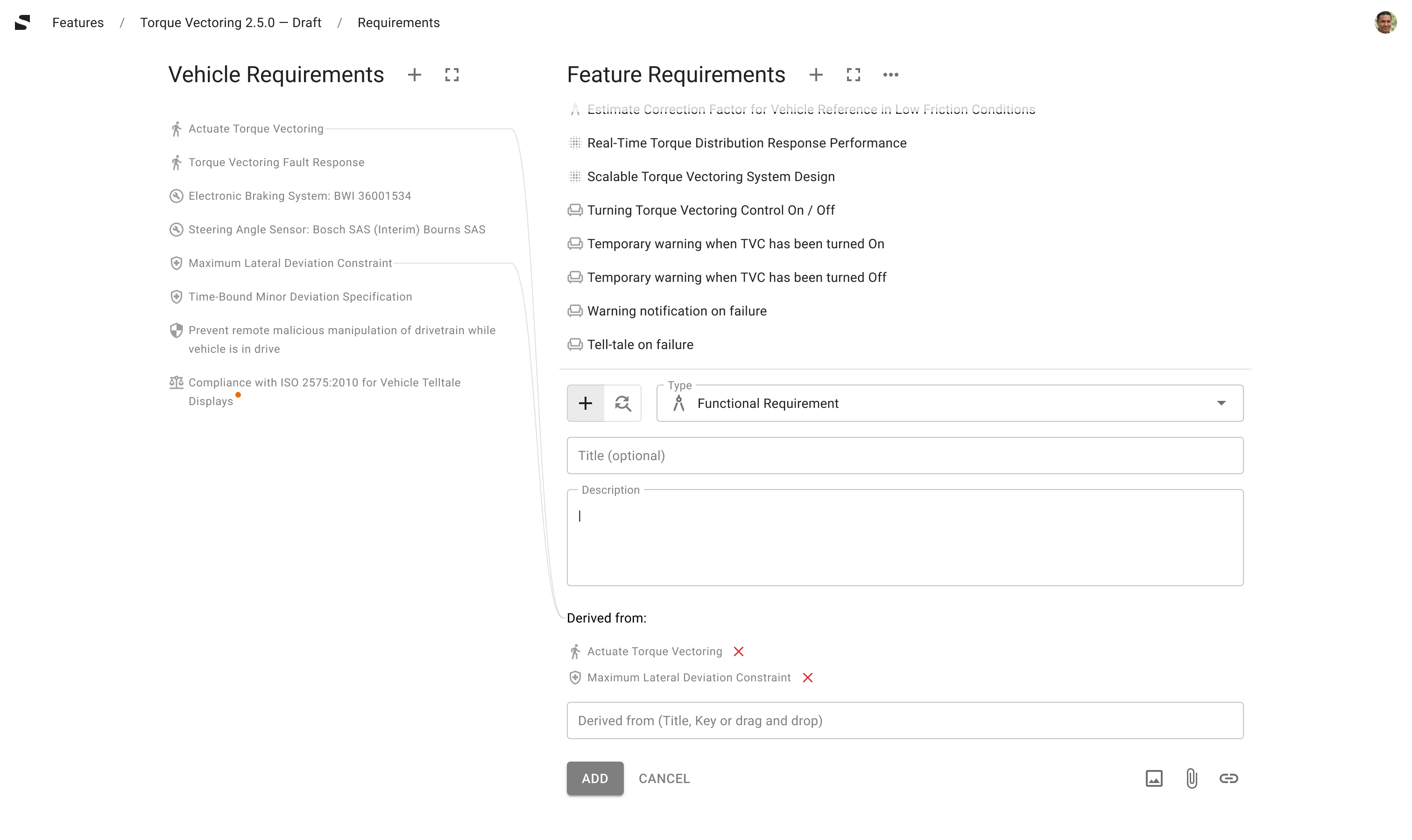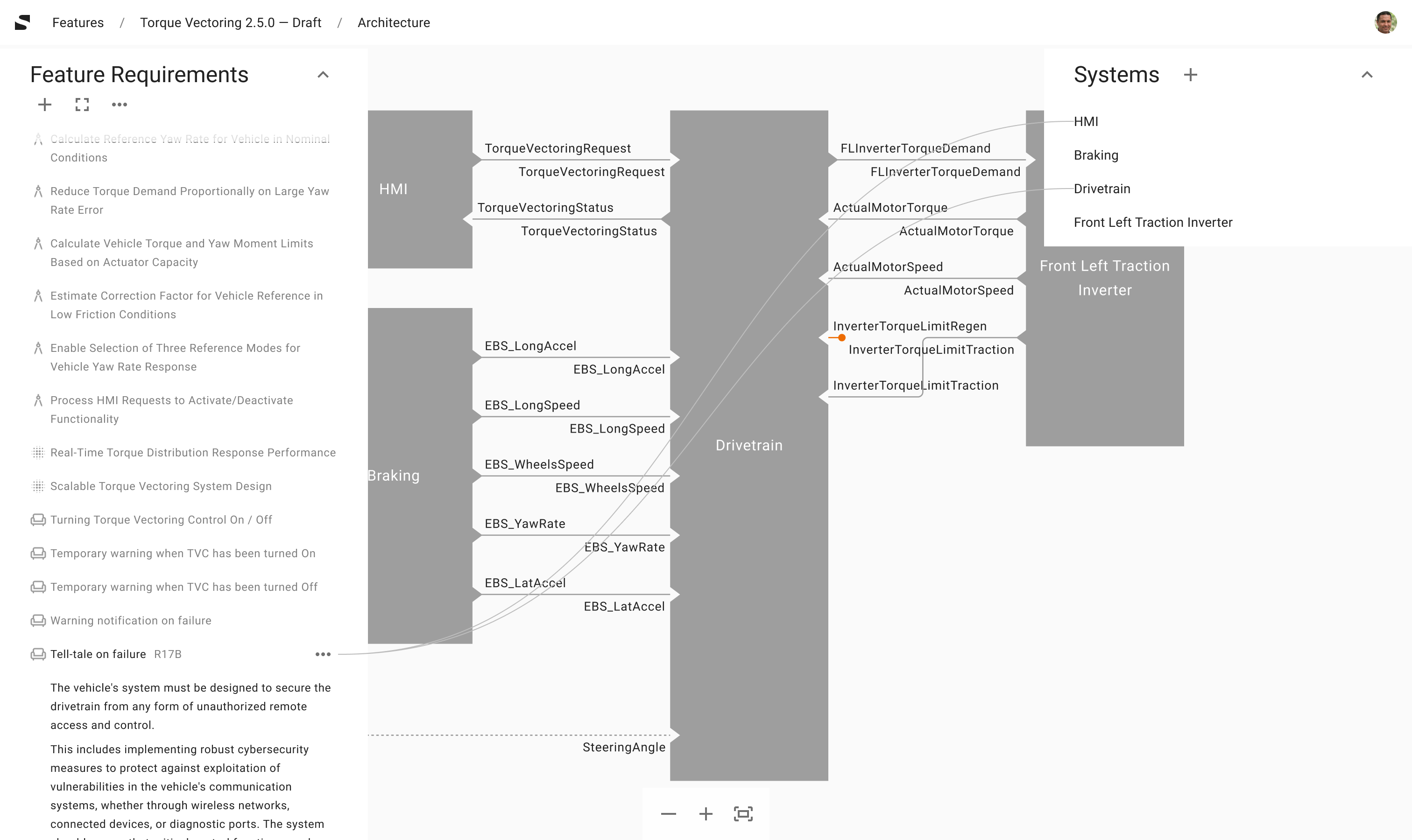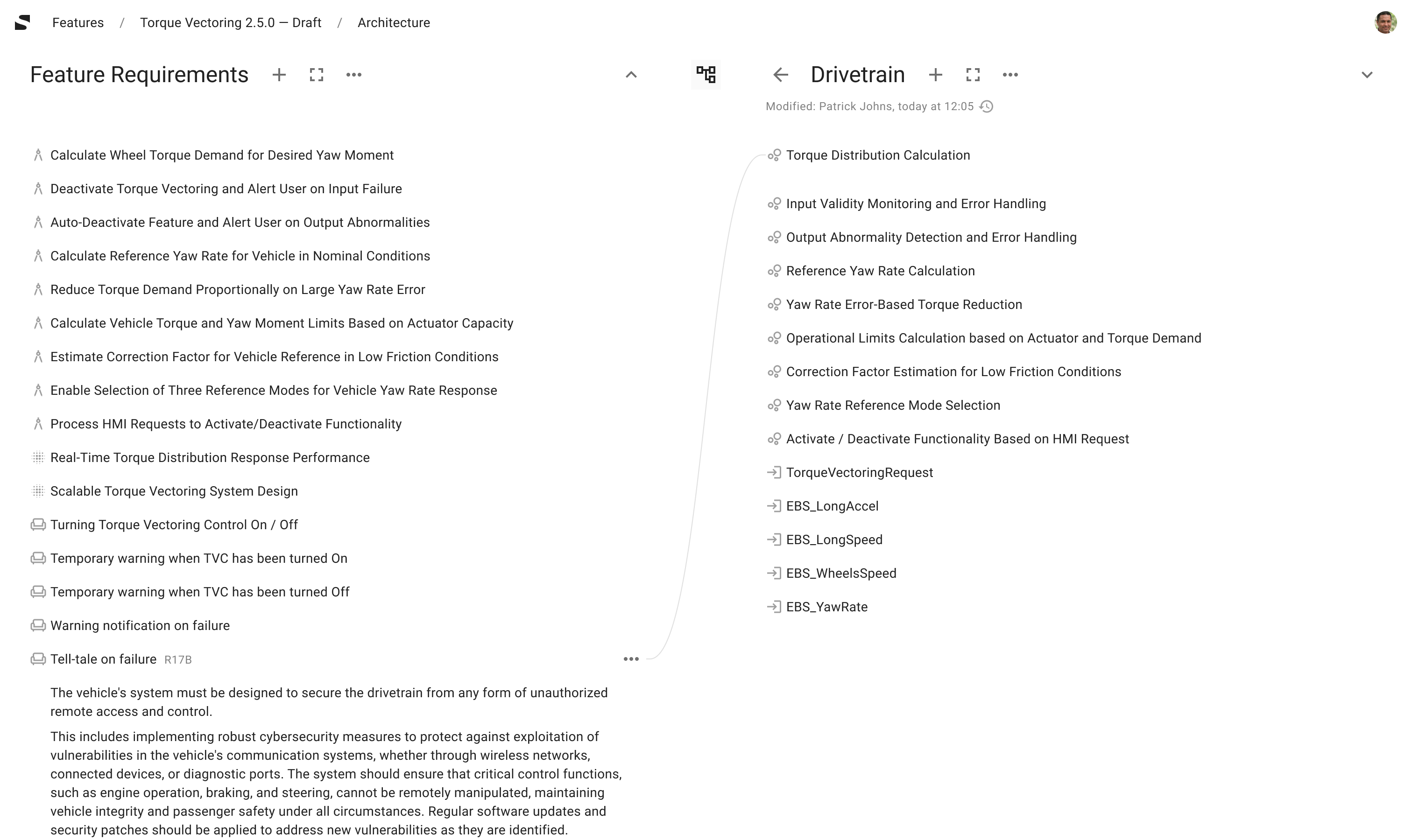2. Features
2.1. Feature Catalogue
You could find Features catalogue in navigation top-bar.

From the list you could navigate to any Version of a giving Feature.
2.2. Feature Version
Feature is a versionable object. Read more on how to manage versions and change log in Versions section.
Feature Version got two main sections: Requirements — where Feature Level Requirements live; and Architecture where Systems and data-flows are managed.

2.2.1. Feature Level Requirements
Feature Level Requirements is a second layer of Requirements in SODA V. They define the scope and functionality of a Feature in its particular Version.

Basic suggested workflow to manage Feature Level Requirements is:
Populate Vehicle Level Requirements layer of a Feature to define initial scope or limitations. They could be either taken from existing Vehicles or added right here.
Add (create or re-use from other Feature Versions) Feature Level Requirements and setting Derived From links to corresponding Vehicle Level Requirements if appropriate for traceability.
Read more about Requirements management.
2.2.1.1. Feature Level Requirements Types
Functional Requirements;
Non Functional Requirements;
Ergonomic Requirements.
2.2.1.2. Feature Ports
Feature port is an interface Requirement to define data inputs and outputs of a Feature required or provided by other Features. Further in the process those ports are connected between the Features in the Vehicle to check data consistency.
Feature ports are added to Feature Level Requirements list.
Ports are managed and revisioned similar to Requirements.
2.2.2. Feature Architecture
Section where Feature functionality is distributed between Systems: Feature Level Requirements are derived to System Level Requirements so each System have a corresponding scope. Also data layer is defined by connections between System Ports.

2.2.2.1. Systems
Systems could be selected to be added from System Catalogue in “Systems” panel.
“System Role” could be defined while adding or afterwards to distinguish Systems instances — particular System could be added more than once. Although set of System Level Requirements would remain the same in all the instances.
2.2.2.2. System Level Requirements
System Level Requirements is a third level of Requirements in SODA V. They define the scope and functionality of a System Version.

The ones added (or re-used) in a System included in Feature Version derive the Feature scope. Defining a part of backlog for particular System to support Feature functionality. System Level Requirements added could have “Derived to” link to Feature Level Requirements for traceability.
Read more about Requirements management.
2.2.2.2.1. System Level Requirements Types
Functional Requirements;
Non Functional Requirements;
Configuration Requirements;
Diagnostic Requirements.
2.2.2.2.2. System Ports
System port is an interface requirement to define data inputs and outputs of a System required or provided by other Systems.
System ports are added to System along with other System Level Requirements.
System Ports could be connected to other Ports on the diagram. Connecting Ports of different Systems — Direct connections — would define data flow between them. Connecting System ports to Feature Ports — Delegation connection — would mean that corresponding System Port is used for communications between Features.
Ports are managed and revisioned similar to Requirements.
2.3. Create a Feature and Feature Version
New Feature could be created:
From scratch via “Create Feature” button in Feature Catalogue (first Version would be created);
As a copy of existing Feature Version (all the Requirements would be copied) via button “Copy” and selecting “Create New Feature” option.
New Feature Version could be create as a copy of existing one (all the Requirements would be copied) via button “Copy” and selecting “Create New Version” option.